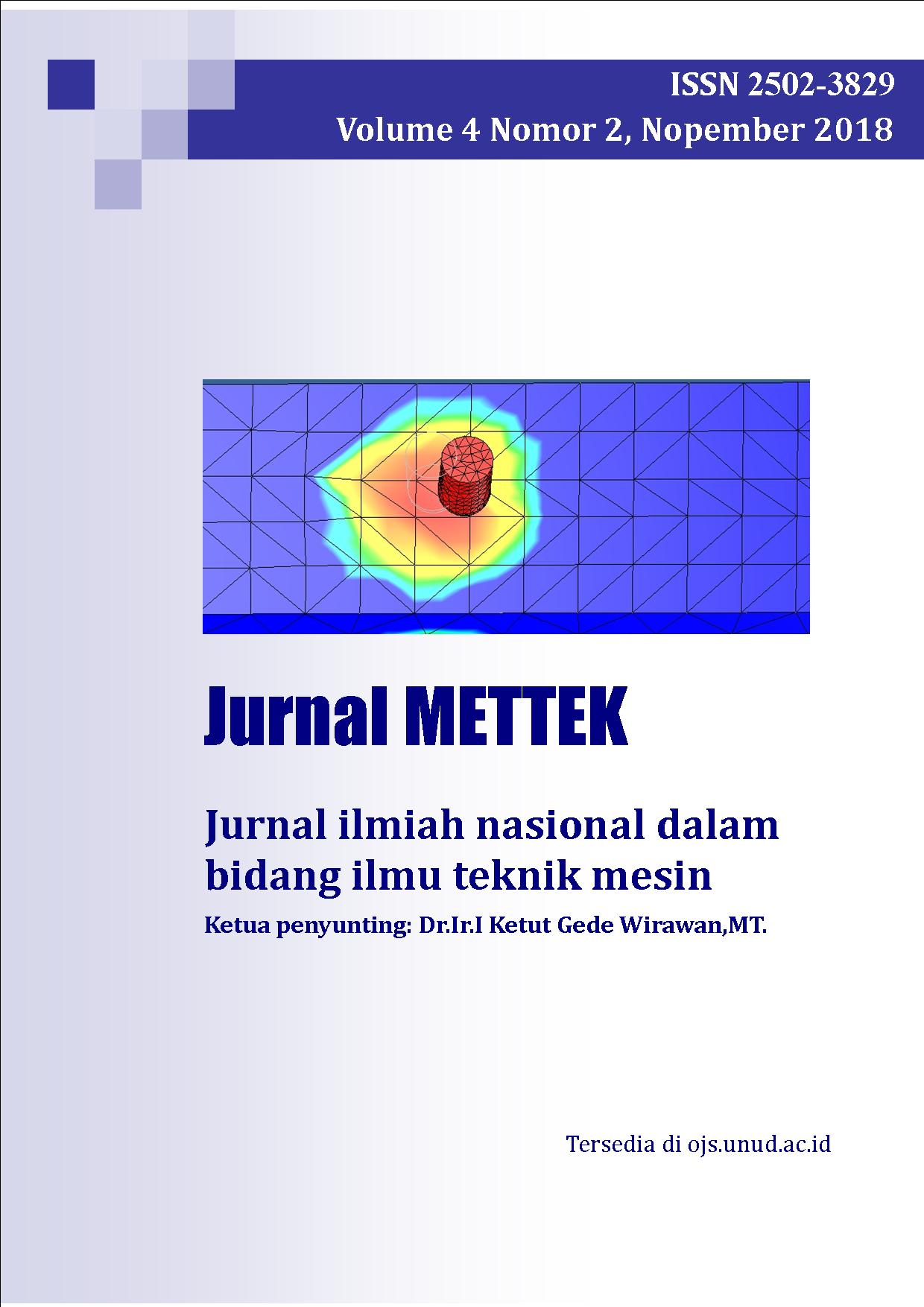Implementasi Sistem Kontrol Fuzzy pada Robot Lengan Exoskeleton
Abstract
Manusia ingin dilahirkan dalam kehidupan yang sempurna, baik jasmani maupun rohani. Tetapi dalam kenyataannya, manusia jauh dari sempurna. Salah satu ketidaksempurnaan yaitu kelumpuhan pada lengan. Penelitian yang sekarang berkembang yaitu robot exoskeleton. Exoskeleton merupakan struktur pendukung dari bagian luar tubuh. Robot ini memiliki aplikasi prospektif untuk rehabilitasi atau alat bantu. Sistem kontrol exoskeleton yang sukses bergantung pada pemahaman yang lebih baik dalam biomekanik gerak tubuh manusia dan mekanisme sensorik yang juga merupakan masalah penting dalam interaksi fisik manusia-robot. Robot siku lengan yang dikembangkan oleh Thomas menggunakan servo motor sebagai aktuator. Semakin berat beban, semakin besar torsi servo tersebut. Di Indonesia tidak dijumpai servo dengan torsi tinggi. Hanya motor DC yang banyak di pasaran. Untuk menekan biaya pengembangan robot lengan exoskeleton, penelitian menggunakan motor DC. Sistem kontrol diperlukan untuk membuat sebuah motor DC bergerak seperti layaknya motor servo. Sistem kontrol logika Fuzzy paling tepat untuk mengontrol motor DC. Sebuah prototype robot lengan exoskeleton dibuat. Motor DC sebagai penggerak lengan robot. Sistem kontrol Fuzzy pada robot dibuat menggunakan software SIMULINK/MATLAB. Gerak robot dibatasi dari 0o sampai 90o. Sistem akan diuji menggunakan SIMULINK/MATLAB dan dilakukan dengan interface prototype exoskeleton. SIMULINK/Matlab memudahkan pembuatan Logika Fuzzy yang dapat mengontrol Motor DC bergerak layaknya motor servo. Data Parameter respon transient dari hasil pengujian prototype selama 20 detik, waktu tunda (td) = 1.16, waktu naik (tr) = 1.98, waktu puncak (tp) = 2.16 . Data parameter sistem kontrol Logika Fuzzy lebih baik daripada sistem kontrol sederhana yang dibuat.
Humans want to be born in a perfect life, both physically and spiritually. But in reality, humans are far from perfect. One of the imperfections is arm paralysis. The current study is an exoskeleton robot. The exoskeleton is the supporting structure of the outer part of the body. This robot has a prospective application for rehabilitation or aids. Successful exoskeleton control systems rely on better understanding of the biomechanics of human body motion and the sensory mechanisms that are also important problems in human-robot physical interactions. The elbow arm robot developed by Thomas uses servo motors as actuators. The heavier the load, the greater the servo torque. In Indonesia there is no servo with high torque. Only DC motors are in the market. To reduce the development cost of robotic arm of exoskeleton, research using DC motor. A control system is needed to make a DC motor move like a servo motor. Fuzzy logic control system is most appropriate for control of DC motors. A prototype of an exoskeleton robot arm is made. DC motor as a actuator robot. Fuzzy control system on the robot is made using SIMULINK / MATLAB software. Robot motion is limited from 0o to 90o. The system will be tested using SIMULINK / MATLAB and done with prototype exoskeleton interface. SIMULINK / Matlab facilitate the manufacture of Fuzzy Logic that can control the motion of DC motors like servo motors. Data Parameter transient response from prototype test result for 20 seconds, Delay time (td) = 1.16, Rise time (tr) = 1.98, Peak time (tp) = 2.16. Data parameters Fuzzy Logic control system is better than the simple control system created.
Downloads

This work is licensed under a Creative Commons Attribution-NonCommercial-ShareAlike 4.0 International License.

This work is licensed under a Creative Commons Attribution-NonCommercial-ShareAlike 4.0 International License.







